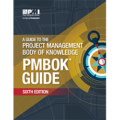
Procurement can be one of the most challenging roads that the project manager must travel. The legal implications, documentation, and vendor and supplier management responsibilities can introduce speed bumps that can have a significant impact on project success. We know, because we’ve been there.
In short, project procurement can make or break a project.
In that spirit, we provide this road map to the project procurement process. Although it can vary, most procurement processes involve the following 6 fundamental steps:
- Prepare the Statement of Work (SOW) / Terms of Reference (TOR)
- Determine the Project Estimate
- Prepare bid documents
- Advertise
- Sellers submit bids
- Sign contracts
Statement of Work / Terms of Reference
In the Project Management Body of Knowledge (PMBOK Guide) the term Statement of Work (SOW) is used to refer to the description of services required by an external vendor. The term Terms of Reference is essentially interchangeable.
Regardless of the terminology, the first step is to produce a written statement of what is required from the subcontractor.
The most important thing is to be comprehensive. There is no way to sugar coat this – An incomplete SOW is a recipe for project problems. Contractors will want additional money for work they didn’t think was part of the contract, and it will be discovered and dealt with at the worst possible time when the contractor is in place and halting their work until it’s dealt with. It may seem onerous, but there are no negative repercussions for having a long, detailed SOW. In fact, owners usually have to deal with incomplete SOW’s during the bidding process anyway, when reputable contractors will be complaining that they are being outpriced by shady ones because they know that missing items are required and must price them in good conscience. The good contractors want your work, and you want the good contractors. It goes both ways.
In short, there no substitute for a thorough statement of work.
Prepare the Project Estimate
 Owners need to know how much the bid is going to cost before they advertise the tender, in order to budget the money.
Owners need to know how much the bid is going to cost before they advertise the tender, in order to budget the money.
In engineering projects, the engineers or architects will itemize each piece of material within the design and estimate the time and materials required to arrive at the final tender estimate. If you don’t have this luxury, you can perform a similar operation, or hire someone to do it.
In professional project management, the project is divided into tasks, and each task is assigned a schedule (start and finish date) and budget. The budget is determined using two methods:
- Analogous estimating involves referencing the actual cost from a previous similar project. For example,
The previous highway construction project cost X per km therefore this one will cost Y per km.
- Parametric estimating involves referencing unit rates from known sources. For example,
The state department of transportation averages X per km of highway construction.
This budget is rolled up into an overall project estimate using a process called bottom up estimating.
The same two estimating methods can be used to estimate the overall project and apportion it downward into individual tasks, called top down estimating. The estimator must decide which one is the final project estimate, and a written justification is usually prudent as well.
Capital budgeting methods such as the net present value are used in conjunction with project estimates when expenditures and returns are spread out over several years, or the feasibility of a project is being studied. When the project results in non-tangible benefits, such as a road construction project, a cost benefit analysis is used to justify the expenditure.
Prepare Bid Documents
 The bid documents contain two parts:
The bid documents contain two parts:
- The technical work description, called the Statement of Work or Terms of Reference (described above).
- The bid submission instructions, logistical bid information, legal requirements, general specifications, insurance and bonding requirements, and so forth.
The bid documents are usually called names like Invitation to Tender, Request for Proposal (RFP), or Request for Quote (RFQ). These documents include the statement of work and/or terms of reference.
In most small to medium size construction contracts the “general specifications” are larger than the project specific ones (statement of work). Everything from bid submission instructions, payment methods, dispute resolution processes, performance bonding, and so forth is all detailed within the “contact shell” and it must be scrutinized in detail during the preparation of the tender documents as well as by the contractors who are bidding on the project, because there are cost and schedule implications for many of the clauses.
Once again, any omissions within the bid documents open up the owner up to legal issues. The omissions are not part of the contract and the legal systems in most (if not all) countries will not support any omissions, however unintentional.
There are three types of contracts which may be utilized:
- Fixed Price. The contractor bids a lump sum which includes all of the risk of project changes within the project scope.
- Cost plus. There is a reimbursement component (cost) and a profit component (plus). The contractor is selected based the sum of both components. The reimbursement component is subsequently paid based on time and materials, and the profit component is paid based on percent complete.
- Time and Materials. The contractors are selected based on the expected total time and materials required, and subsequently paid based on time and materials expended. Usually the total bid price becomes a fixed maximum fee. The contractor’s profit must be included within the unit rates, for example, the hourly rate for construction equipment includes profit.
The procurement strategy determines the best way to structure the contracts and subdivide the work to accomplish the project’s goals.
Advertise
Once the bid documents are finalized, the project can be advertised on the medium that is ideal for that industry. Most industries have standard project tender advertising locations which should be used. In this day and age, those are usually websites tailored to each industry.
It is common that the bid documents require clarification during the bidding process. This is done via an “addendum” which becomes part of the bid documents. Addenda must be acknowledged by the bidders when submitting their bid or it must be rejected. This is because the bids must be evaluated equally. A contractor that missed an addendum might have a lower price but there is no way to evaluate whether their bid would still be lowest if they included the additional work described in the addendum. Even if their bid is chosen, they might request extra work (money) later in an uncompetitive environment.
Sellers Submit Bids
 Once the advertising period is over, the contractors submit their bids. Each bid should be evaluated to ensure they have included everything and have received the addenda. All unit prices should be checked to ensure there are no mathematical errors before accepting a bottom line bid.
Once the advertising period is over, the contractors submit their bids. Each bid should be evaluated to ensure they have included everything and have received the addenda. All unit prices should be checked to ensure there are no mathematical errors before accepting a bottom line bid.
In most jurisdictions, the vendor bids are an offer that is open for acceptance. Once the owner has accepted one of the bids, the legal basis for a contract (offer and acceptance) is established and the signing of the contracts is merely a formality, legally speaking.
The requirements of a legally binding contract depend on the jurisdiction, of course, but almost all jurisdictions include the following five components:
- Offer
A formal offer to enter into a contract must be made. This is the contractor’s bid submission. - Acceptance
The opposite party must formally accept the offer. This happens when the owner accepts one of the bids. - Consideration
There must be some form of payment for work under the contract, even if it’s not monetary. If there is no payment, it is charity and although noble, nobody is obligated to provide charitable services to anyone else. - Legal
The work under the contract must be legal. For example, a contract to rob a bank is not a legally enforceable contract. Although this may sound like a no brainer, I’ve seen a few situations in my career, for example when a contract was established which included building a bridge with a pier in the river, and the fisheries legislation didn’t permit a certain type of berm in the river at a certain time of year. - Parties
The parties to the contract must be of age to sign the contract, and of sound mind to know what they are doing.
If you need any more detail than that about what constitutes legally enforceable contracts, you will need to consult a lawyer in your jurisdiction.
A prequalification process can be used which involves a Request for Qualification to short list a number of vendors who then prepare a more detailed bid. The contractors are qualified based on their ability to do the work, and the procurement process moves back to step 3 (preparation bid documents) to receive financial bids from the prequalified contractors. The list of prequalified contractors is usually public information, and then the information flow moves behind closed doors. The prequalification phase involves rating the contractors on categories like project team, project methodology, and past projects. The second, bidding phase contains the bid prices.
Also, sometimes the bids are opened in a “two envelope” system. The envelope containing the non-financial information is opened first, allowing for a fair evaluation of the technical qualifications of the contractors without bias towards price. This system requires a predetermined schedule of acceptance criteria that includes more than just the price. Project team, project methodology, and past performance are common criteria. The “envelopes” are usually separate computer (pdf, etc.) files.
Sign Contracts
Once a suitable contractor is chosen, the contracts are signed and the project proceeds into the execution phase.
As I alluded to before, the signing of the contracts is usually a formality knowing that a legally enforceable contract is already in place.
At the conclusion of this process the owner and contractor usually have a meeting to discuss the project schedule and any applicable project issues, and then the contractor begins the work.
A strong procurement process ensures that the contractor performs good work and that the project finishes a success.
Good luck.






